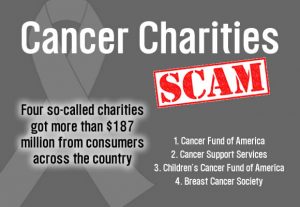The world seems to be plagued with natural disasters, often leaving people homeless, injured, or worse. From the fire at Notre-Dame de Paris to earthquakes to hurricanes, the world tries to make sense of the destruction. People often feel helpless and want to offer support in any way they can. In this case, that usually involves sending money for supplies and shelter for the victims and their families. Therefore, with each tragedy, charities – real and false – ask for donations.
A True Natural Disaster
There is no denying that the number of natural disasters worldwide is greater than ever. The news reports on disasters around the world, including the latest epic disaster taking place in the Amazon. While global organizations and government agencies leap into action, so do people intent on stealing money from well-wishers worldwide. Charity scams appear the minute disaster strikes, and scammers begin telemarketing efforts and email campaigns. Their goal is to tap into the good will of the public eager to help ease the burden of those devastated by tragedy. For most people, the thought of stealing from victims is unthinkable. The scammers count on this to rake in the profits.
Stealing from Survivors
Con artists use the emotions of people during and after a disaster for personal gain. For every accident, natural disaster, or act of terrorism, con artists develop schemes to cash in from the public’s good intentions. They ask for money through websites, fundraisers, social media, email, and phone calls. These con artists are convincing, and the pleas are endless.
Unknown Charities
If you are contacted be sure to check out the organization before giving any money, credit card or bank account information. Some fraudsters will even claim to work for a major aid organization or agency such as the American Red Cross or FEMA. If you suspect that an agency may not be real or the representative is trying to involve you in a charity scam, ask for the organization’s information, including their legal address, website, and contact information. You may also request a copy of the agency’s officers and annual report to verify that it is a valid charity. These requests will often cause the scammer to end the call.
Legitimate Charity Organizations
There are many charitable organizations worldwide. Unlike the American Red Cross or FEMA, some organizations may not be well known. However, that does not make them scams. Special charities may be organized to help with a specific tragedy. Many charities were organized in the aftermath of Hurricane Katrina and helped survivors get through the devastation in New Orleans via crowd-funding and donations.
Researching Charities
If you are uncertain about a particular charity, you can research it at the Better Business Bureau or through the BBB Wise Giving Alliance. The Wise Giving Alliance verifies legitimate charities and also shows how monies are spent. The agency publishes an annual Wise Donor Handbook and Wise Giving Guide three times a year, offering the latest information on charities and common charity scams. Another resource is the Federal Trade Commission’s list of organizations. The list verifies real charities. You can also read news on charitable organizations, scams, and what to do if you have been scammed. The blog post “Before Giving to a Charity” shows how you can donate through various social media sites.
Making Donations
Most organizations say donations to their cause are tax deductible as charitable contributions. Donors are often encouraged to give more money if there is a possible tax deduction from the Internal Revenue Service. However, donations under a certain dollar amount aren’t tax deductible. Secondly, money given to individuals, crowdfunding sites or unofficial charities are not tax deductible. The IRS lists which organizations are eligible for tax deductions. The IRS also features a Tax Exempt Organization Search can help you to check an organization’s eligibility status.
Local Charities
Fraudsters may use caller ID spoofing to make you think that the charity is local. Voice over Internet Protocol (VoIP) enables callers to use any available phone number. This allows con artists to choose a phone number in any state or region, usually with the intent to defraud others.
Donors are more comfortable giving money if they believe that the charity is in their state or town. Charities located out of the country automatically raise suspicion and should be vetted before any monies are given. If an unknown local charity contacts you and you suspect it may not be real, contact your local police department.
Telemarketers
Telemarketers, including those that use robocalls, must adhere to a specific set of rules from the FCC regarding caller ID spoofing:
- The company is required to display its phone number. If it’s a call center or telemarketing company, they must display the phone number of the company they represent. It is also suggested that the company display its name along with the phone number, if possible.
- The company is also required to display a phone number that consumers can call during regular business hours. Callers must have the ability to remove themselves from the call list. This rule applies to all organizations, even if you have an established business relationship.
- Companies must obey the rules of the National Do Not Call Registry. Violators should be reported to the Federal Trade Commission (FTC).
Avoid Scams
Callers can be pushy or rude when asking for money. Robocalls to make it hard to avoid the demands for funds. If you receive a call from someone asking for money, ask questions. Does the organization use the money for admin costs or marketing expenses? How is the money being spent? If you think the call is suspicious, hang up and research the charity online. If the calls continue, use a phone number lookup app to block the number from your phone.
Report the Crime
If you think you have been scammed by a fake charity, report it online through the FTC’s Complaint Assistant. Give as much information as possible. Secondly, if you have used a bank or credit card to donate, contact the financial institution to block the payment. Lastly, report the scam to your state’s Attorney General.







